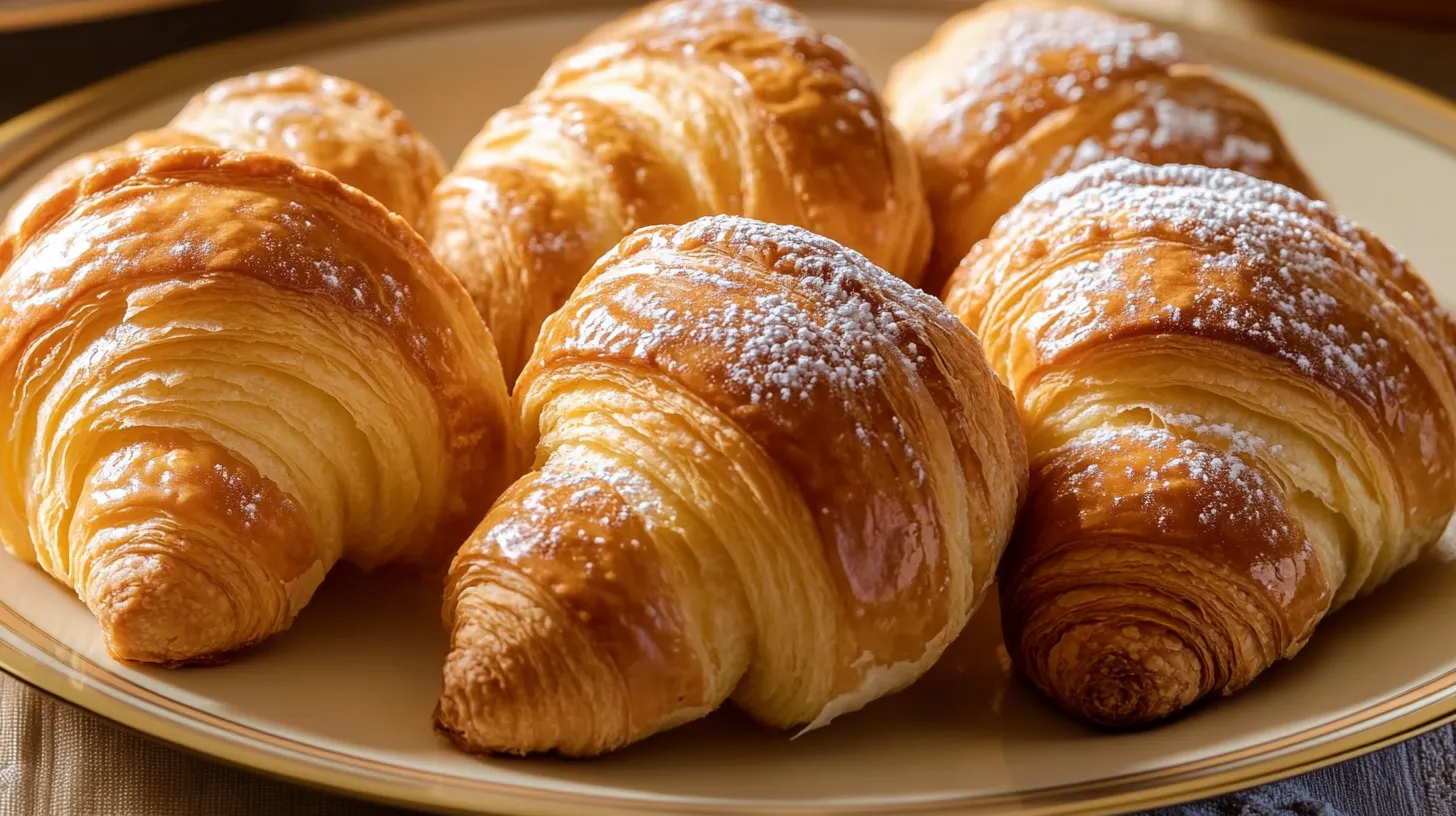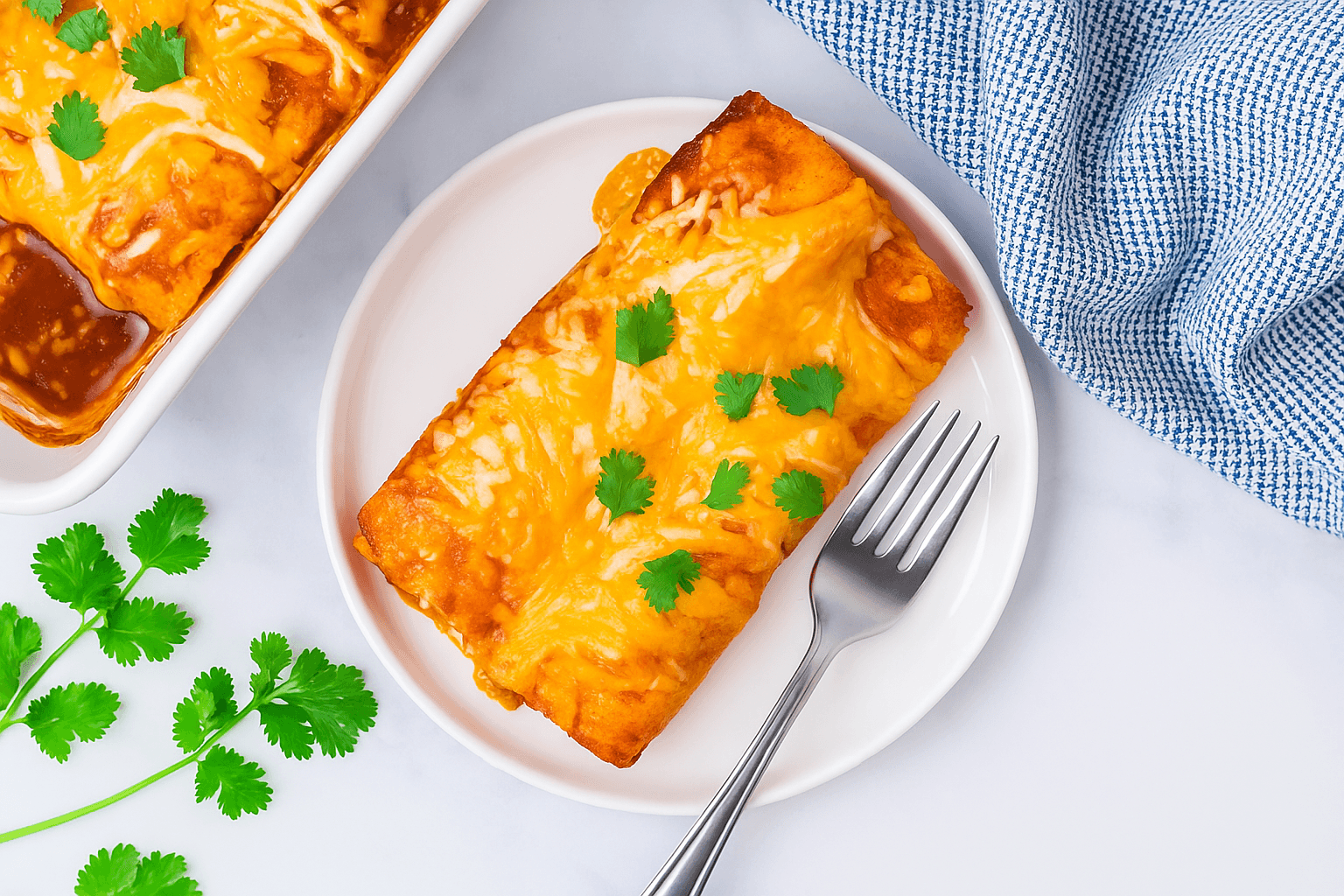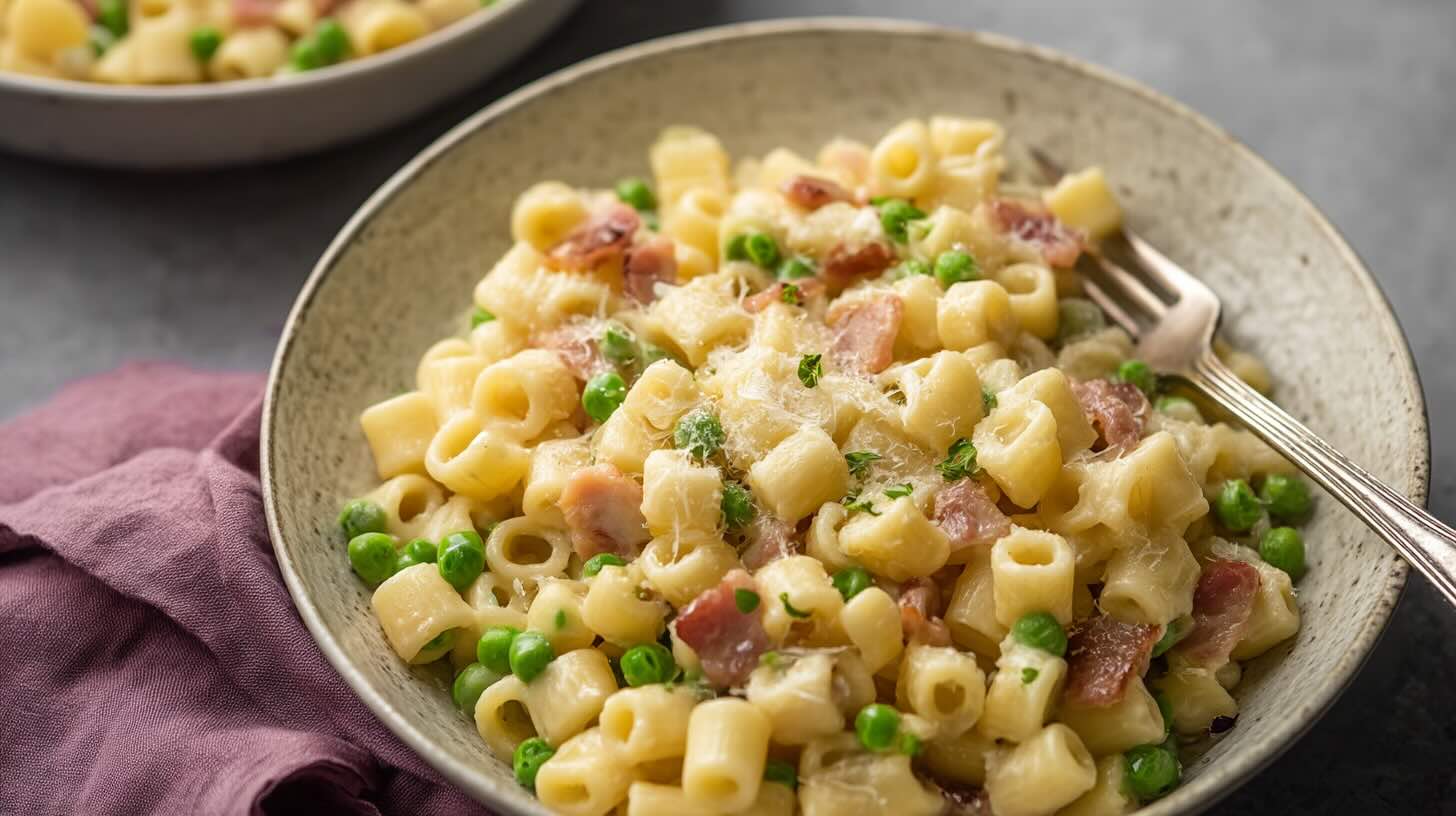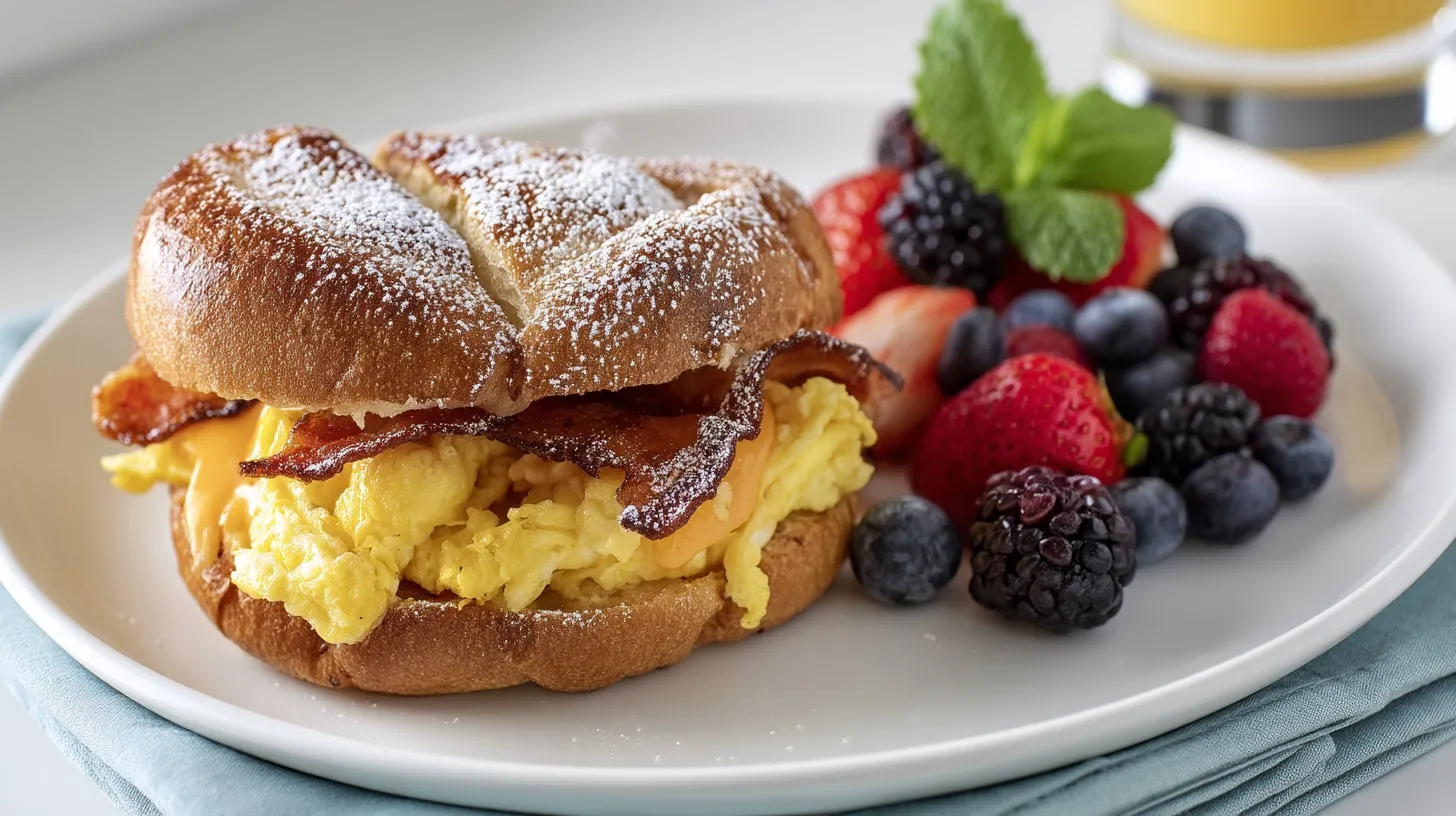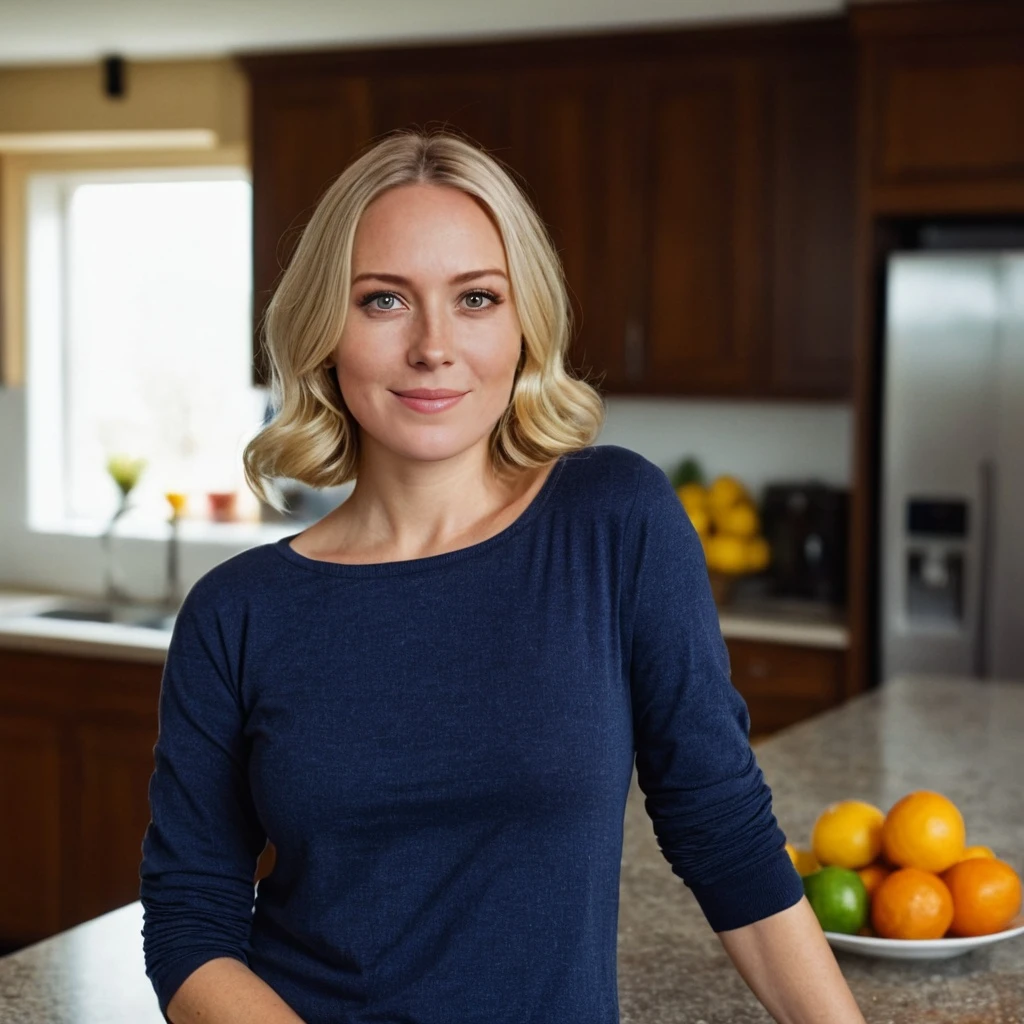There’s something magical about biting into a perfectly baked gipfeli on a crisp Swiss morning. That delicate, buttery crescent that breaks into flaky layers with each bite. I still remember my first encounter with these Swiss croissants during a trip to Zurich that changed my baking journey forever. Today, I’m sharing my treasured gipfeli recipe that took years to perfect – one that brings that authentic Swiss bakery experience right to your kitchen.
Table of Contents
What Are Gipfeli? (Swiss Croissants Explained)
Gipfeli (pronounced “gip-fel-ee”) are Switzerland’s answer to the French croissant, though any Swiss baker will quickly tell you they’re distinctly their own creation. These golden, crescent-shaped pastries are a breakfast staple across Switzerland, known for their pointed ends, buttery layers, and perfect balance between crisp outside and soft inside.
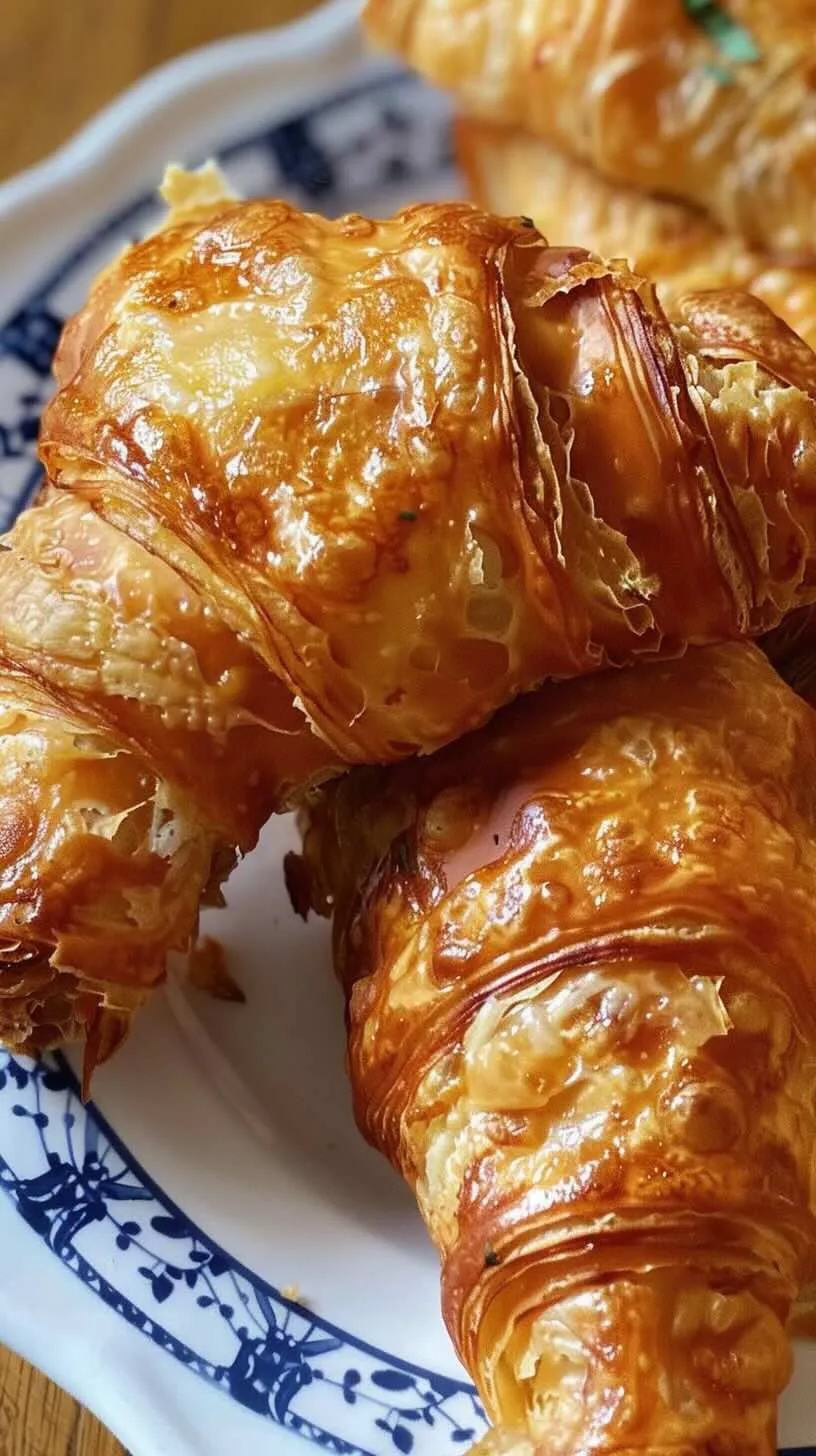
My first taste of a real gipfeli came from a small bakery hidden on a cobblestone street in Zurich’s old town. The baker handed me the pastry still warm from the oven, and that first bite – that perfect mix of butter, yeast, and gentle sweetness – created a memory I’ve been trying to recreate in my kitchen ever since.
While similar to French croissants, gipfeli typically have more butter and are shaped more dramatically into those signature pointed ends. The result is a pastry that’s slightly sweeter, more tender, and uniquely Swiss.
Just like gipfeli, many classic recipes have their own secrets. Discover the art behind perfect crème brûlée in this insightful guide
Why You’ll Love This Homemade Gipfeli Recipe
This gipfeli recipe isn’t just another croissant variation – it’s the result of countless Saturday mornings experimenting in my kitchen, learning from Swiss bakers, and testing different techniques until I found the perfect balance. What makes this recipe special is how approachable it is; I’ve broken down the process into simple steps that even beginners can follow.
You’ll love how the kitchen fills with that amazing buttery, yeasty smell as they bake. There’s something really satisfying about taking a tray of golden gipfeli from the oven, knowing you’ve mastered a beloved Swiss tradition. And trust me – once you’ve tasted homemade gipfeli, warm and fresh from your own oven, store-bought versions will never compare.
Everything You Need to Get Started
Before diving into this gipfeli recipe, let’s talk about the tools that will make your baking experience much easier. When I first started making these Swiss treats, I learned that having the right equipment makes all the difference!
Essential tools for perfect gipfeli:
- A good straight rolling pin for better control when creating layers
- A bench scraper for handling dough and cutting triangles cleanly
- A kitchen thermometer to check milk temperature
- A ruler or measuring tape for consistent triangle sizes
- Baking sheets with parchment paper
- A cool surface for working the dough
- A pastry brush for applying egg wash
- A plastic dough scraper to gather sticky dough without adding extra flour
- Cooling racks for keeping the pastries crisp after baking
Don’t worry if you don’t have everything right away! When I started, I used what I had and gradually built my collection. The most important tools are a good rolling pin, reliable baking sheets, and parchment paper – everything else just makes the process easier.
Ingredients
Essential Ingredients for Perfect Gipfeli
The beauty of this gipfeli recipe lies in its simplicity. You don’t need fancy ingredients – just quality basics:
For the dough:
- High-protein bread flour – sifted
- Fine sea salt
- Granulated sugar
- Cold milk
- Fresh active yeast (or instant yeast if necessary)
- Water (adjust as needed for dough consistency)
For the butter layer:
- High-fat butter (cold for layering)
For the finish:
- Egg (beaten for egg wash)
The secret to truly exceptional gipfeli is using the best quality butter you can find. I discovered this when visiting my Swiss friend’s grandmother, who insisted on using locally-made Alpine butter for her treasured gipfeli recipe. The difference was amazing! Butter with higher fat content creates those distinct, flaky layers that define a perfect gipfeli.
If you’re curious about other dairy alternatives, learn how cashew milk is made and how it can be used in baking and cooking.
Optional Fillings and Variations
While traditional gipfeli are enjoyed plain, there are many possibilities for variations:
- Almond Gipfeli: Brush the inside with almond paste before rolling
- Chocolate Gipfeli: Add thin strips of dark chocolate before shaping
- Hazelnut-Honey: Spread a thin layer of hazelnut butter and drizzle with honey
- Cheese Gipfeli: For a savory twist, add grated Swiss cheese
- Jam-Filled: A small spoonful of apricot or raspberry jam adds wonderful sweetness
My personal favorite is adding a thin layer of homemade hazelnut spread with a sprinkle of cinnamon. My nephew calls these “morning desserts” and they disappear within minutes when I make them for family brunches.
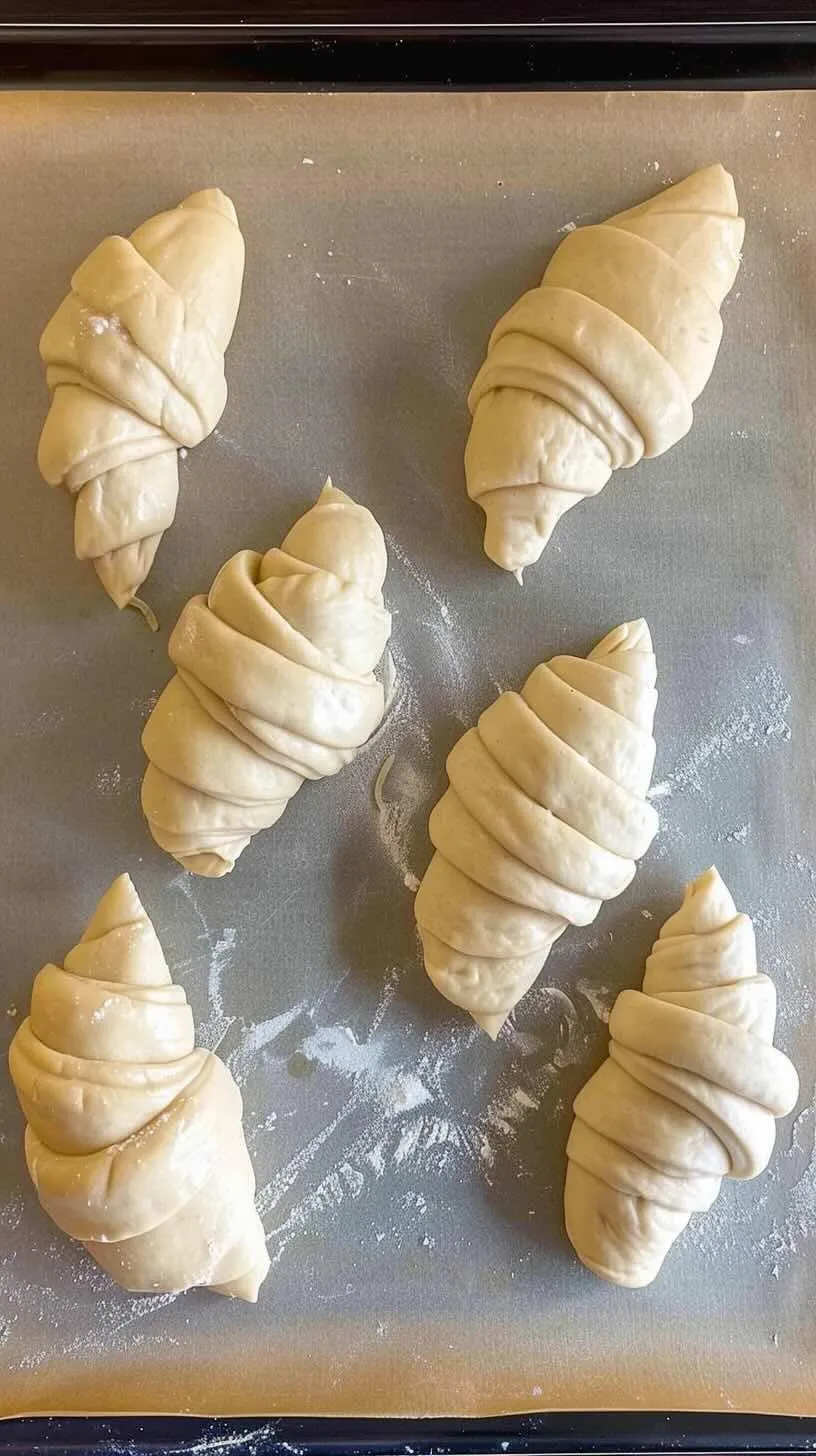
Step-by-Step Instructions
Preparing the Dough
The foundation of any good gipfeli recipe starts with properly prepared dough. Here’s my foolproof method:
- In a large bowl, mix the sifted bread flour, sugar, and salt.
- In a separate bowl, warm the milk until it’s just lukewarm (too hot will kill the yeast).
- Dissolve the fresh active yeast in the lukewarm milk and let it sit for about 5 minutes until it becomes bubbly.
- Make a well in the center of the dry ingredients and pour in the yeast mixture.
- Add water gradually, mixing until a rough dough forms. You may not need all the water – the dough should be slightly firm but not sticky.
- Turn onto a lightly floured surface and knead for 5-7 minutes until smooth and elastic.
- Place in a greased bowl, cover with plastic wrap, and refrigerate for at least 2 hours (overnight is even better).
I learned the hard way that patience is crucial here. My first attempts at this gipfeli recipe rushed this refrigeration step, and the results were dense, heavy pastries. The slow, cold rise develops flavor and makes the dough easier to work with.
For another breakfast favorite that pairs well with gipfeli, try this simple and protein-packed cottage cheese and eggs recipe.”
Rolling and Shaping the Gipfeli
Now comes the magic that creates those beautiful, flaky layers:
- While the dough chills, prepare your butter layer. Place cold butter between two pieces of parchment paper and beat with a rolling pin until it’s soft but still cold. Shape into a rectangle, then refrigerate.
- Roll chilled dough into a rectangle about twice the size of your butter rectangle.
- Place the butter in the center of the dough.
- Fold the dough over the butter like an envelope, sealing edges completely.
- Roll this package into a rectangle about 12×8 inches, then fold it in thirds like a letter.
- Turn 90 degrees, roll out again, and fold in thirds again. This completes two “turns.”
- Wrap in plastic and refrigerate for 30 minutes.
- Repeat the rolling and folding process twice more, chilling between each set.
- After the final turn, roll dough into a large rectangle about ⅛-inch thick.
- Cut into triangles and roll each from the wide end to the point, slightly curving the ends to form the classic crescent shape.
My grandmother always said the secret is in “cold hands, warm heart” – keeping everything chilled while working quickly. I keep a stone pastry board in the refrigerator beforehand, which helps tremendously on warm days when making this traditional gipfeli recipe.
Baking Tips for a Golden, Flaky Finish
The final steps determine whether your gipfeli will be bakery-worthy:
- Place shaped gipfeli on parchment-lined baking sheets, leaving plenty of space between each.
- Cover loosely with plastic wrap and let rise until puffy, about 1-2 hours.
- Preheat your oven to 400°F (200°C).
- Brush each gipfeli gently with egg wash, being careful not to flatten them.
- Bake for 15-18 minutes until deeply golden brown.
- Cool on a wire rack for at least 10 minutes before serving.
I discovered through multiple batches that the oven temperature is crucial. Too hot, and they burn before cooking through; too cool, and you lose those beautiful layers. An oven thermometer made all the difference in perfecting my gipfeli recipe’s baking success.
Serving and Pairing Suggestions
How to Enjoy Gipfeli Like the Swiss
In Switzerland, gipfeli are breakfast royalty, typically enjoyed in specific ways:
The traditional Swiss breakfast includes fresh gipfeli served alongside a bowl of coffee (often dipped into the coffee!) and a small pot of jam or honey. There’s something wonderfully special about tearing off a piece of flaky pastry, dipping it briefly into your coffee, and experiencing that perfect combination of flavors.
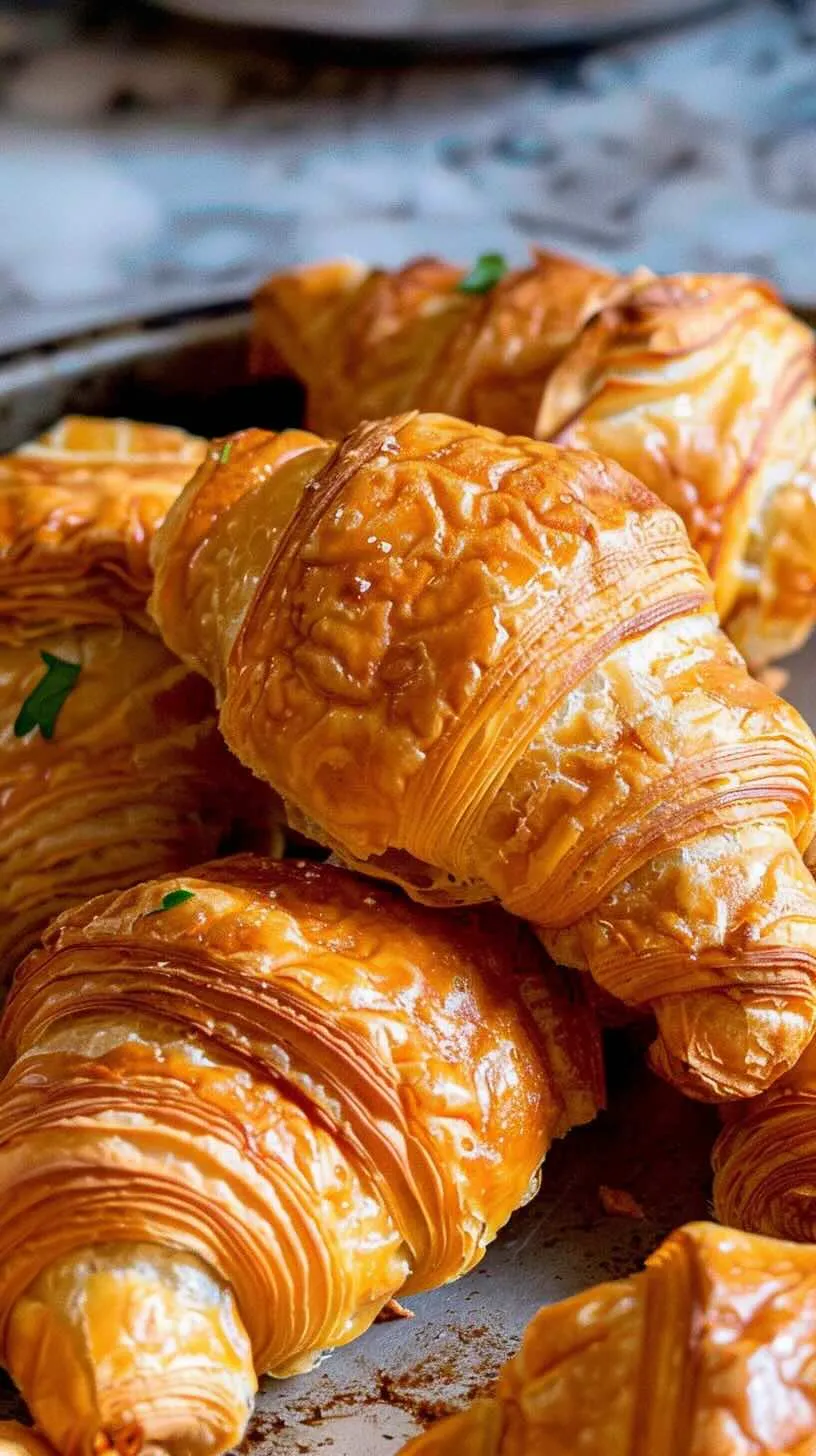
During my stay with a Swiss family in Bern, I noticed they never rushed breakfast. Gipfeli were enjoyed slowly, paired with fresh fruit and a soft-boiled egg. It was a moment of calm before the day began – a tradition worth adopting.
If you’re looking for more breakfast inspiration, these strawberry waffles are a delightful way to start your day with fresh fruit and fluffy texture.
Best Spreads and Fillings to Try
While purists enjoy gipfeli plain, these pairings elevate the experience:
- Swiss honey (particularly alpine flower varieties)
- Homemade berry preserves
- Swiss chocolate spread
- Fresh butter with a sprinkle of sea salt
- Apricot jam (a Swiss favorite)
For an indulgent weekend brunch, I love serving a “gipfeli board” with various jams, honey, and fresh fruit, letting everyone customize their pastry. It’s always the highlight of family gatherings and a wonderful way to showcase this authentic gipfeli recipe.
Storage and Make-Ahead Tips
How to Store Leftover Gipfeli
Gipfeli are at their absolute best when fresh from the oven, but proper storage can maintain their quality:
- Store completely cooled gipfeli in an airtight container at room temperature for up to 2 days.
- To refresh, warm in a 300°F (150°C) oven for 3-5 minutes to restore crispness.
- Never refrigerate baked gipfeli – the moisture ruins their texture.
I learned this storage wisdom after a disappointing experience serving day-old gipfeli to guests. Now I always reheat them before serving, and they almost taste freshly baked.
Freezing and Reheating Instructions
The beauty of this gipfeli recipe is that you can prepare ahead:
For unbaked gipfeli:
- Prepare through the shaping stage.
- Place on a baking sheet and freeze until solid.
- Transfer to freezer bags and store for up to 1 month.
- Thaw overnight in the refrigerator, then allow to rise and bake as directed.
For baked gipfeli:
- Cool completely.
- Wrap individually in foil, then place in freezer bags.
- Freeze for up to 3 months.
- Thaw at room temperature, then reheat at 350°F (175°C) for 5-7 minutes until warm and crisp.
I keep a stash of frozen unbaked gipfeli ready for unexpected guests. There’s nothing more impressive than “freshly baked” pastries appearing as if by magic on a Sunday morning, and guests are always amazed when I share my treasured gipfeli recipe with them.
Just like gipfeli, many dishes can be prepared ahead or repurposed. Check out these creative recipes for using leftover rotisserie chicken.
More Baking and Breakfast Inspiration
If you’ve fallen in love with making gipfeli, why not expand your baking repertoire with these delightful recipes? Here are some ideas to continue your culinary journey:
For a quick and easy breakfast, try our French Toast Breakfast Sandwich, which combines sweet and savory flavors in one delicious bite.
If you’re a fan of flaky pastries, our Cuban Bread Recipe offers a slightly different but equally satisfying baking experience.
Looking for a healthier option? Our Banana Bread Recipe Without Butter is a crowd-pleaser that pairs perfectly with your morning coffee.
For a savory twist, explore our Chicken and Cheese Sandwich, a hearty option that’s perfect for brunch or lunch.
Frequently Asked Questions (FAQs)
What is the difference between a croissant and a gipfeli?
A croissant is the French pastry, while a gipfeli is the Swiss German version. Gipfeli tend to be smaller, less buttery, and slightly denser than French croissants. They often have a more pronounced curved shape (the word “gipfeli” means “little peak” or “little tip”).
What is a mandelgipfel?
A mandelgipfeli is a Swiss almond croissant. It’s a sweet pastry filled with almond paste and often topped with sliced almonds and powdered sugar. The name combines “mandel” (almond) and “gipfeli” (the Swiss German word for croissant).
Can I make gipfeli without a stand mixer?
Yes! While a stand mixer can make the process easier, you can absolutely make gipfeli by hand. Just be prepared for a bit more arm work when kneading the dough. The traditional method actually calls for kneading by hand, which gives you better control over the dough’s texture and development.
Why did my gipfeli turn out dense instead of light and flaky?
Dense gipfeli usually result from either overworking the dough (developing too much gluten), not allowing enough time for proper refrigeration between folds, or butter that’s too warm melting into the dough instead of creating distinct layers. Make sure to work quickly when handling the dough and keep everything cold throughout the process.
Can I prepare the dough the night before and bake in the morning?
Absolutely! This is actually ideal. Prepare the dough through the final shaping, place the shaped gipfeli on baking sheets, cover loosely with plastic wrap, and refrigerate overnight. In the morning, let them come to room temperature and rise for about 45-60 minutes before applying egg wash and baking.
What’s the difference between gipfeli and French croissants?
While similar, gipfeli typically have a higher butter content, more pointed ends, and slightly sweeter flavor than French croissants. The shaping technique is also different—gipfeli are rolled more tightly and curved more dramatically to achieve those distinctive pointed ends that Swiss bakers take pride in.
Can I use margarine or vegan butter instead of dairy butter?
While traditional gipfeli are made with high-fat dairy butter, you can substitute plant-based alternatives. Look for solid vegan butter blocks (not spreadable versions) with at least 75% fat content. The texture will be slightly different, but you can still achieve good lamination. Just be aware that the flavor will not be exactly the same as traditional gipfeli.
Conclusion
Mastering this gipfeli recipe has been one of my most rewarding cooking journeys. What began as an attempt to recreate a vacation memory has become a beloved tradition in my home. There’s something deeply satisfying about preserving this Swiss baking heritage, one buttery layer at a time.
I encourage you to embrace the process – yes, there are multiple steps, but each one contributes to that moment when you pull perfectly golden crescents from the oven. Your kitchen will fill with an aroma that takes you straight to a Swiss bakery, and that first bite – crisp, buttery, and utterly perfect – makes every minute worthwhile.
Whether you’re an experienced baker or trying your hand at layered dough for the first time, this authentic gipfeli recipe offers a taste of Swiss tradition that connects us to generations of bakers who have shaped these crescents with loving hands. As they say in Switzerland, “En Guete!” – enjoy your meal!
If you enjoyed mastering gipfeli, you might also love uncovering the secrets to making perfect waffles for your next breakfast adventure.
PrintGipfeli Recipe
These Swiss-style croissants (gipfeli) feature delicate, buttery layers with distinctive pointed ends. My authentic recipe creates bakery-quality pastries with a crisp exterior and soft, airy interior. Perfect for breakfast with coffee or as part of a weekend brunch spread.
- Prep Time: 3 hours (includes resting time)
- Cook Time: 18 minutes
- Total Time: 3 hours 18 minutes
- Yield: 12 gipfeli 1x
- Category: Breakfast
- Method: Baking
- Cuisine: Swiss
- Diet: Vegetarian
Ingredients
- 3 ¼ cups high-protein bread flour, sifted
- 1 teaspoon fine sea salt
- ¼ cup granulated sugar
- ½ cup cold milk
- 1 tablespoon fresh active yeast (or instant yeast)
- ¼ cup water (adjust as needed)
- ½ cup high-fat butter (cold, for lamination)
- 1 egg (beaten, for egg wash)
Instructions
- Mix sifted bread flour, sugar, and salt in a large bowl.
- Warm milk until lukewarm. Dissolve yeast in milk and let sit for 5 minutes until frothy.
- Create a well in dry ingredients, pour in yeast mixture. Add water gradually until a firm but not sticky dough forms.
- Knead for 5-7 minutes until smooth and elastic. Place in greased bowl, cover, refrigerate for at least 2 hours (preferably overnight).
- Prepare butter layer: Place cold butter between parchment paper, beat until malleable but still cold. Shape into rectangle, refrigerate.
- Roll chilled dough into rectangle twice the size of butter rectangle. Place butter in center, fold dough over butter like an envelope, sealing edges.
- Roll into 12×8 inch rectangle, fold in thirds. Turn 90 degrees, roll out, fold in thirds again.
- Wrap in plastic, refrigerate for 30 minutes. Repeat rolling and folding twice more, chilling between sets.
- After final turn, roll dough into large rectangle about ⅛-inch thick. Cut into triangles, roll from wide end to point, slightly curve ends.
- Place on parchment-lined baking sheets, cover loosely, let rise until puffy (1-2 hours).
- Preheat oven to 400°F (200°C). Brush with egg wash, bake 15-18 minutes until deeply golden.
- Cool on wire rack for at least 10 minutes before serving.
Notes
- Use the highest quality butter you can find for the best flavor and texture.
- Keep all ingredients and tools cold throughout the process.
- Patience is key—don’t rush the refrigeration or rising steps.
- For make-ahead option, shape gipfeli and refrigerate overnight, then let rise and bake in the morning.
- Store in airtight container at room temperature for up to 2 days; never refrigerate baked gipfeli.
Nutrition
- Serving Size: 1 gipfeli
- Calories: 215
- Sugar: 5g
- Sodium: 220mg
- Fat: 12g
- Saturated Fat: 7g
- Unsaturated Fat: 4g
- Trans Fat: 0g
- Carbohydrates: 24g
- Fiber: 1g
- Protein: 4g
- Cholesterol: 45mg
Keywords: gipfeli, Swiss croissants, laminated pastry, breakfast pastry, Swiss breakfast, homemade croissants, flaky pastry, butter pastry, Swiss baking

